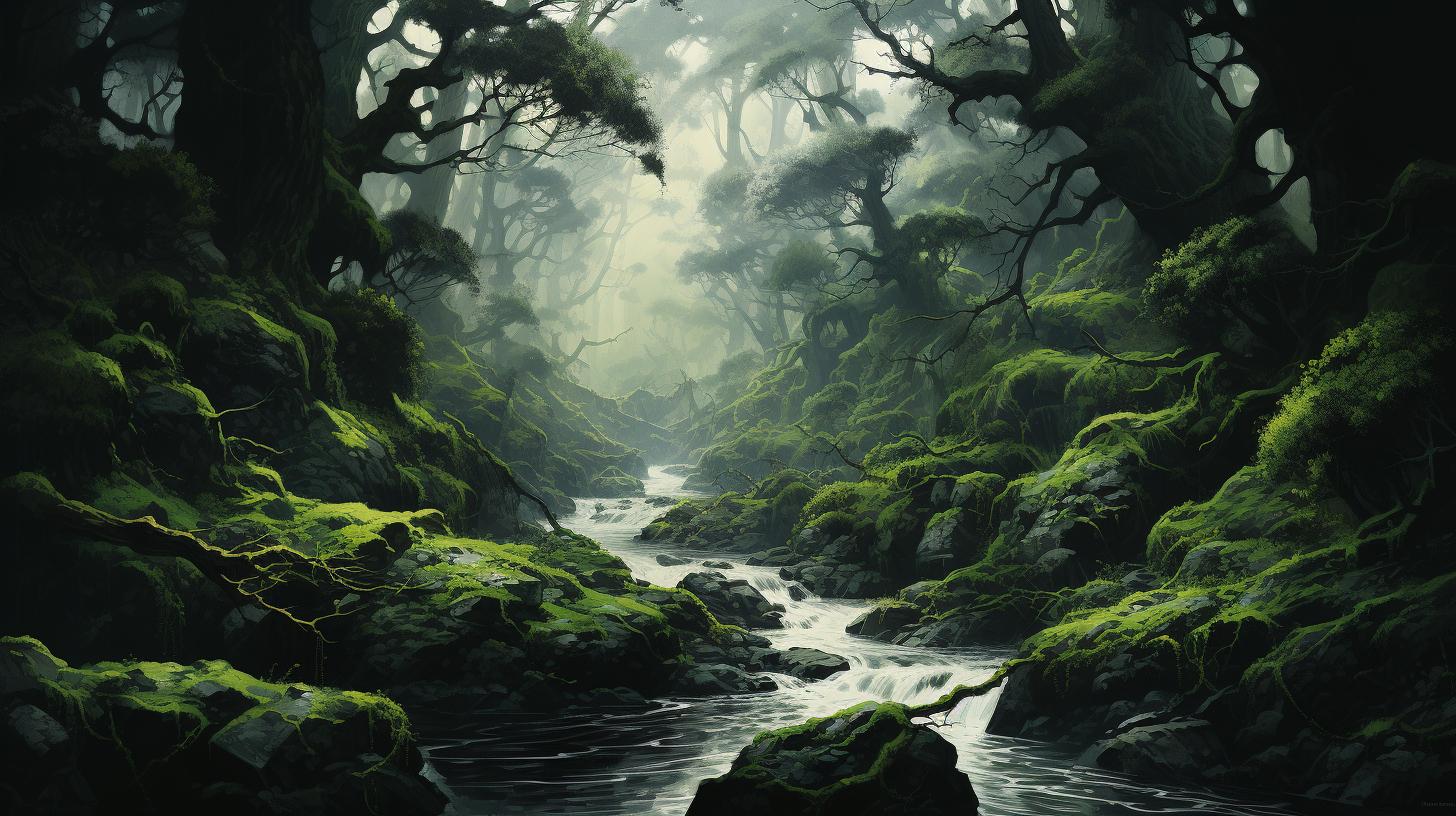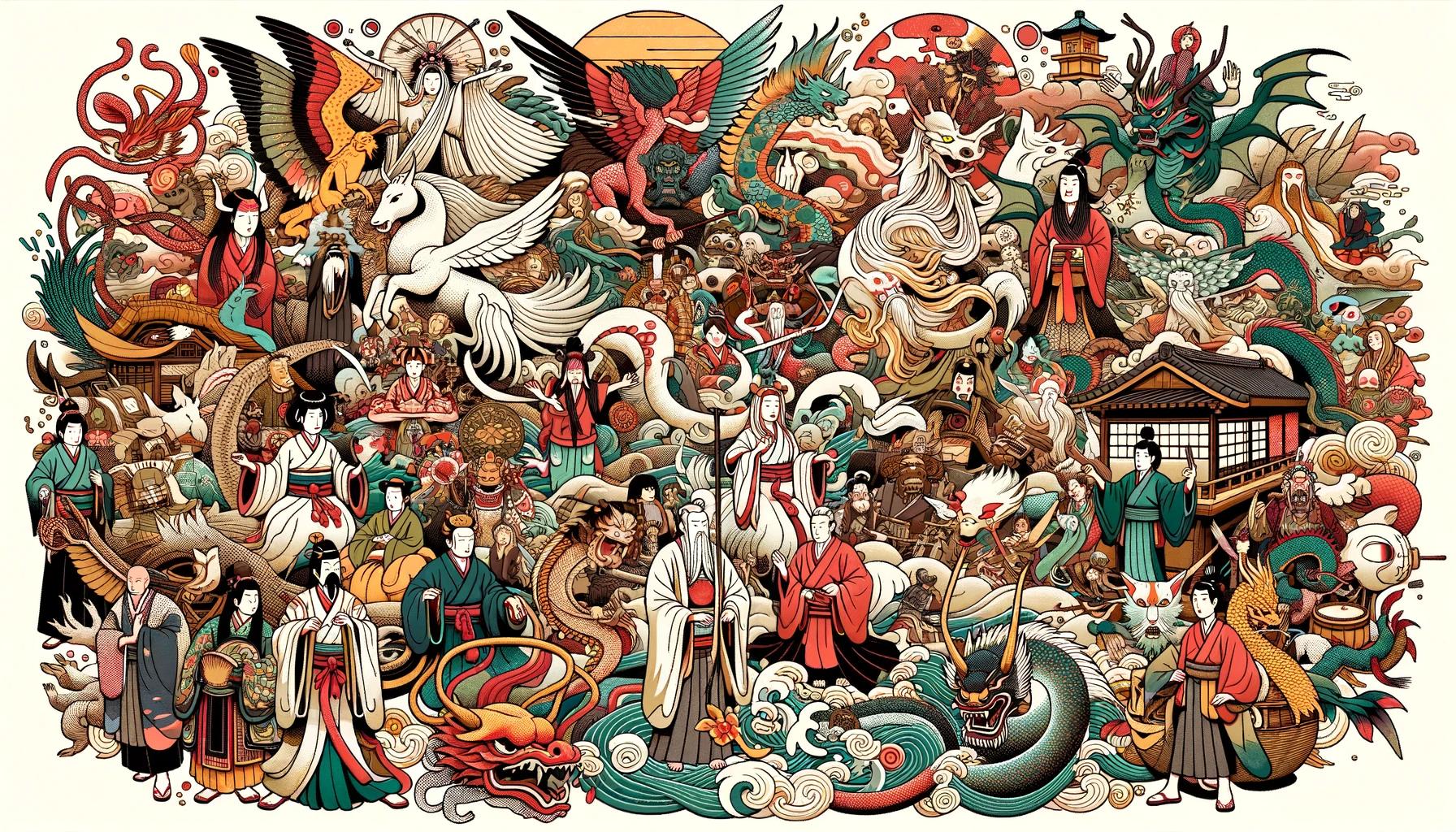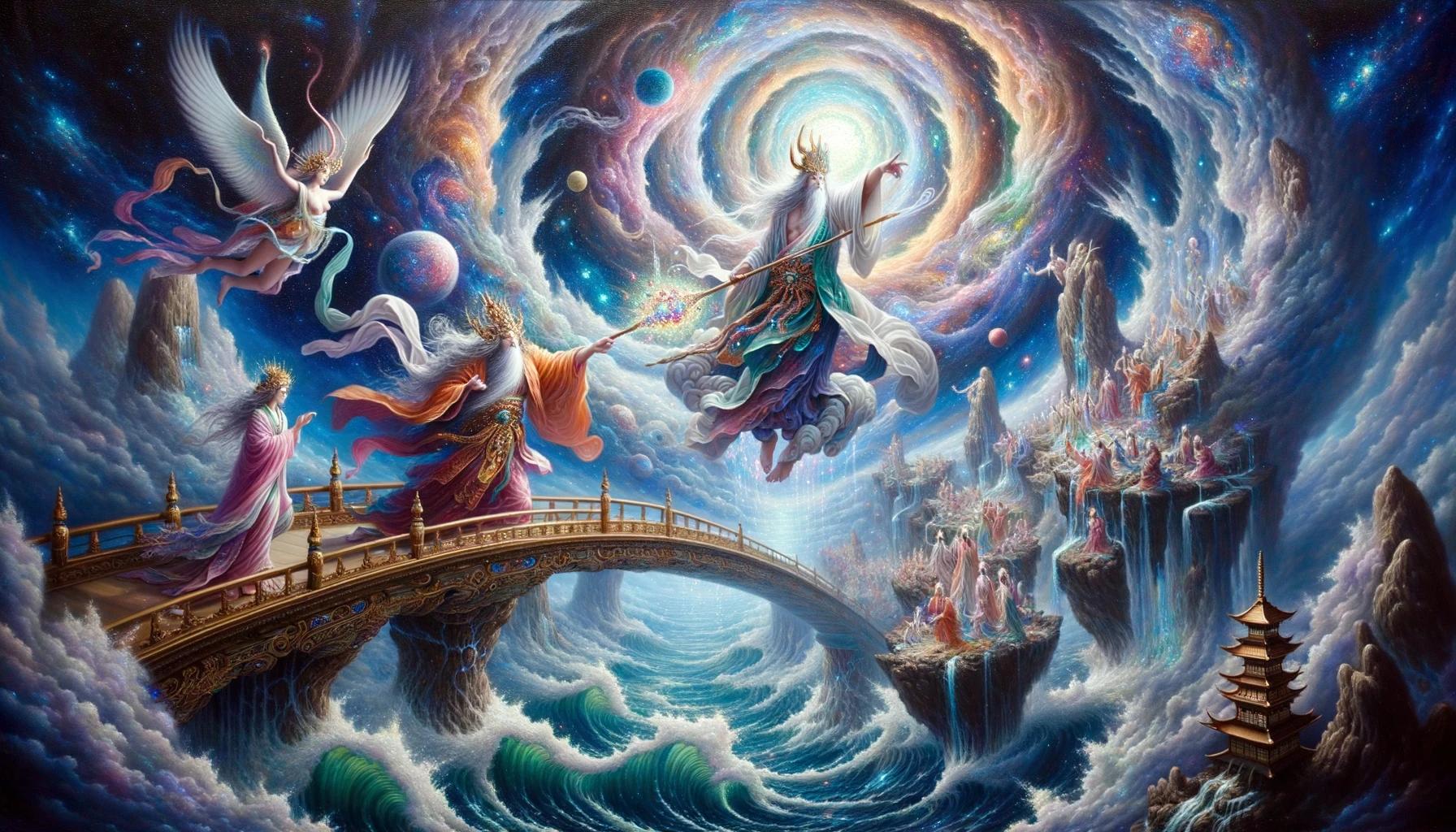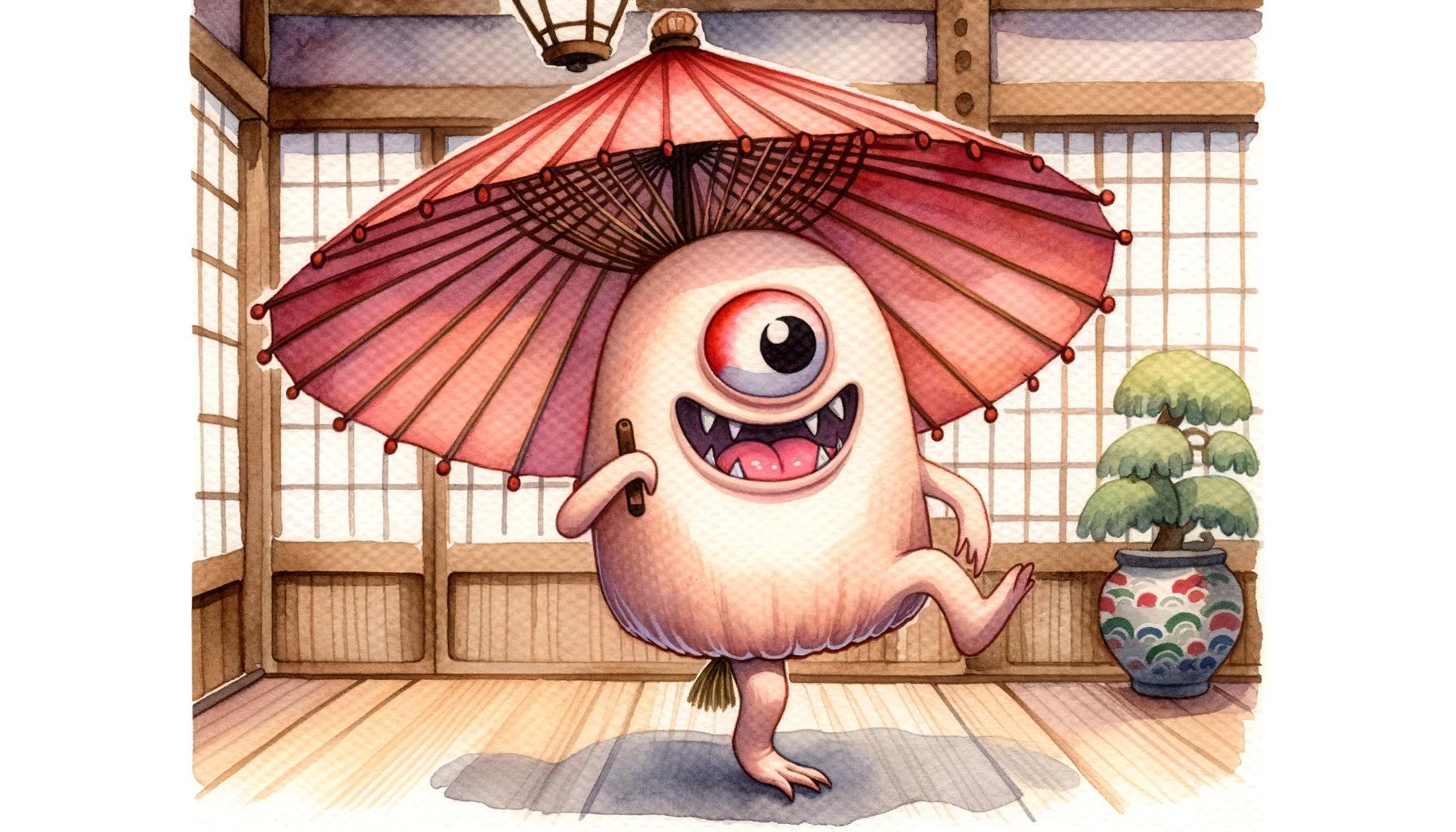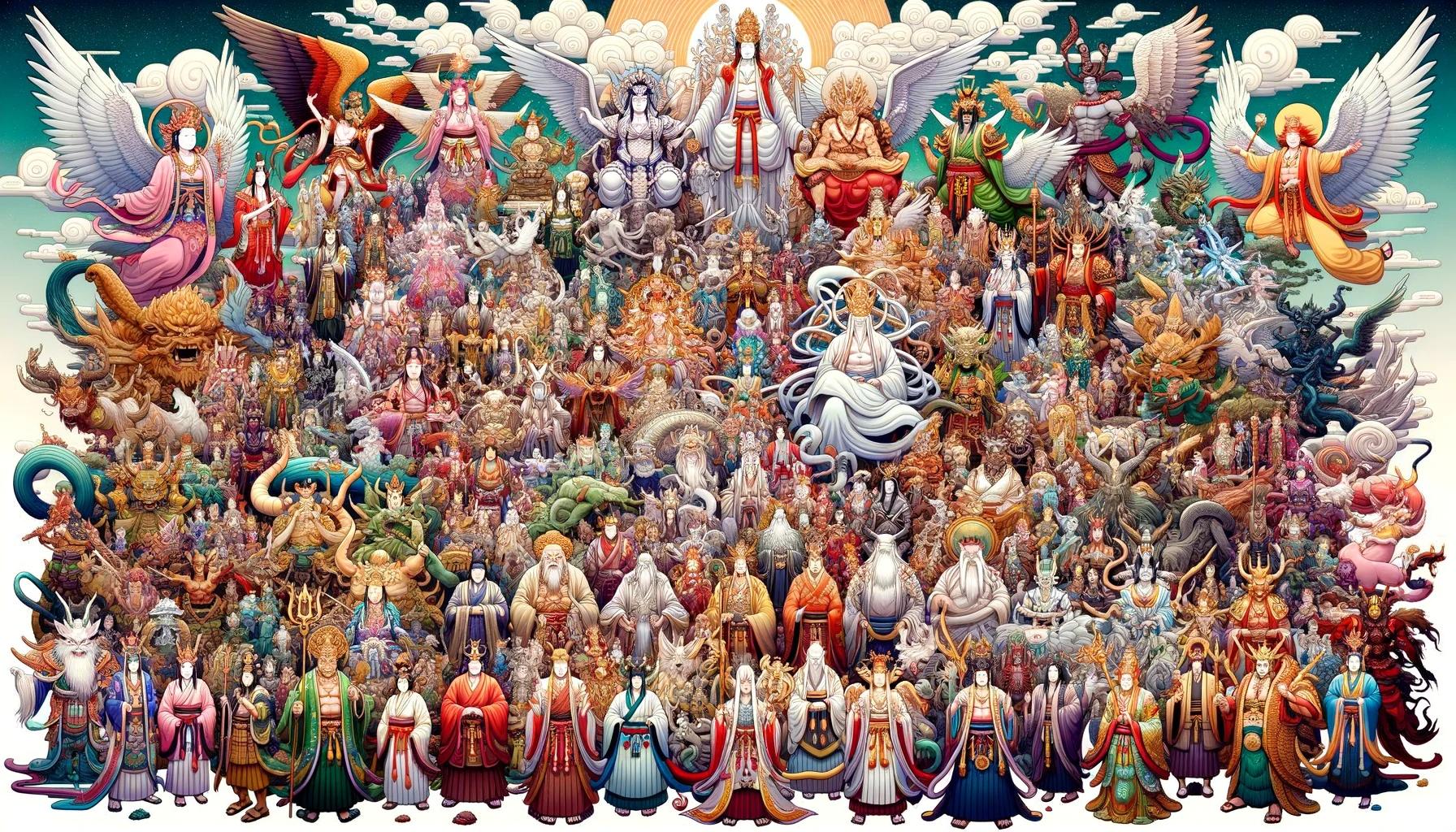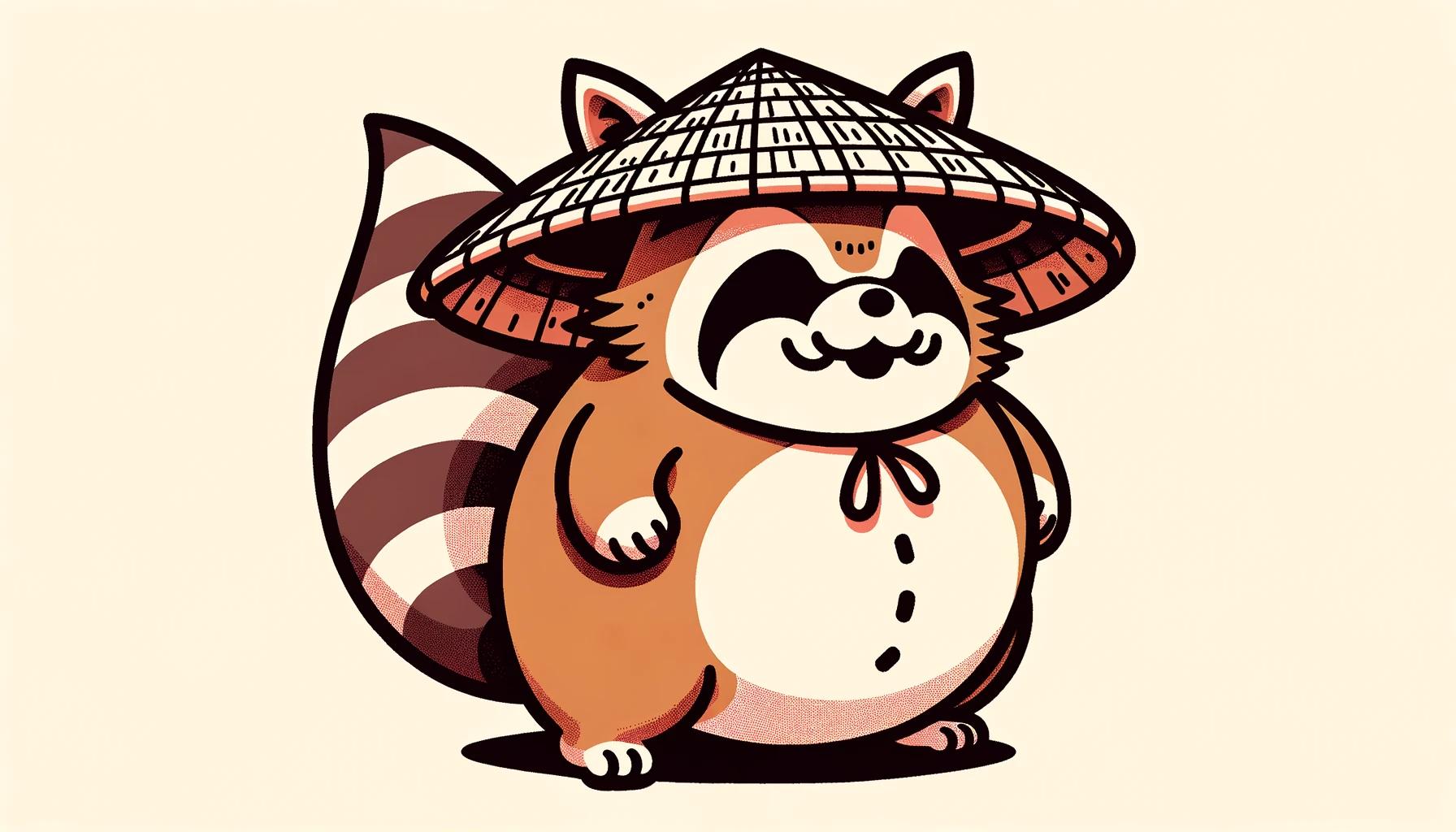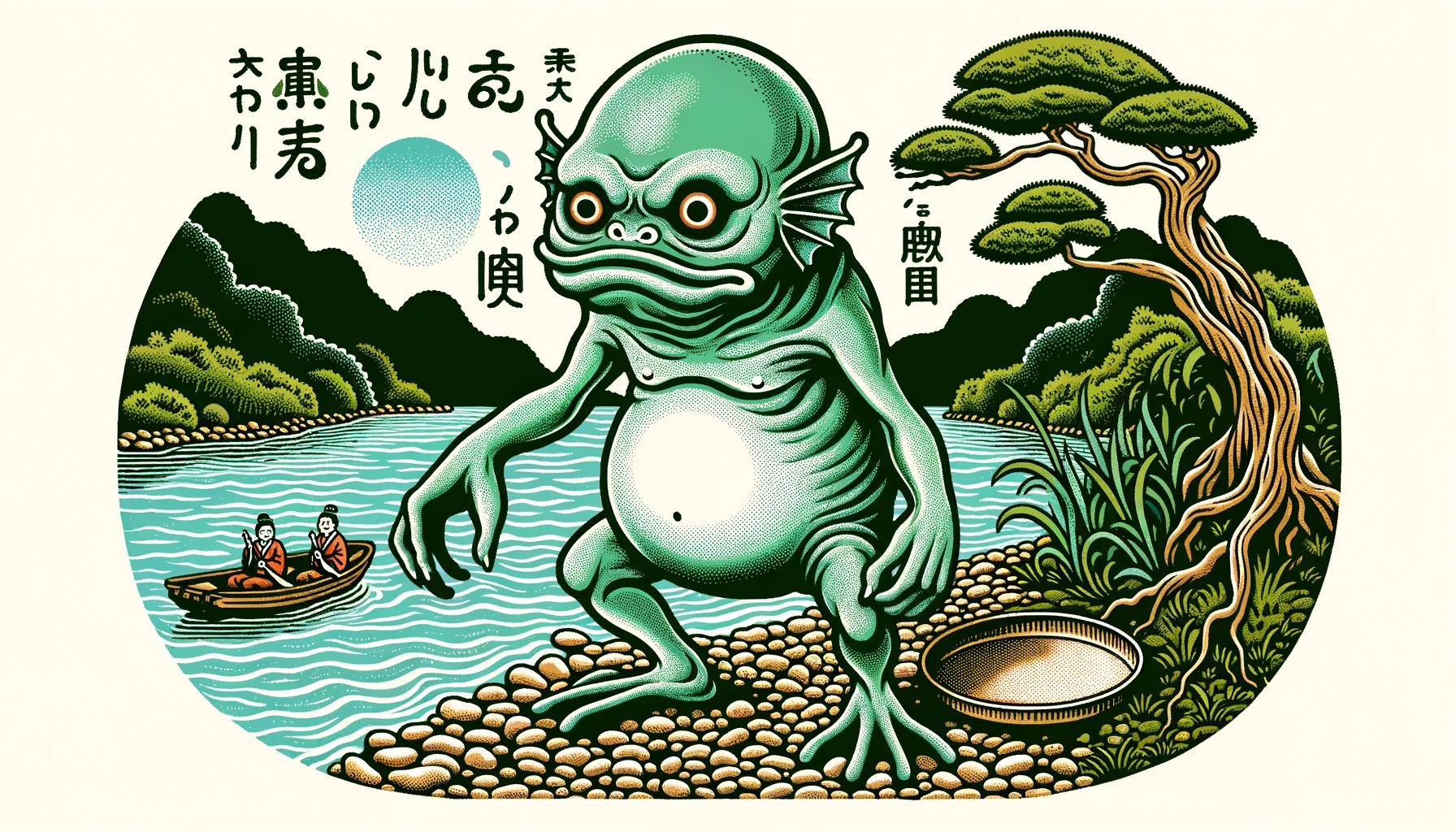Understanding Kami: Exploring the Deities of Japanese Mythology
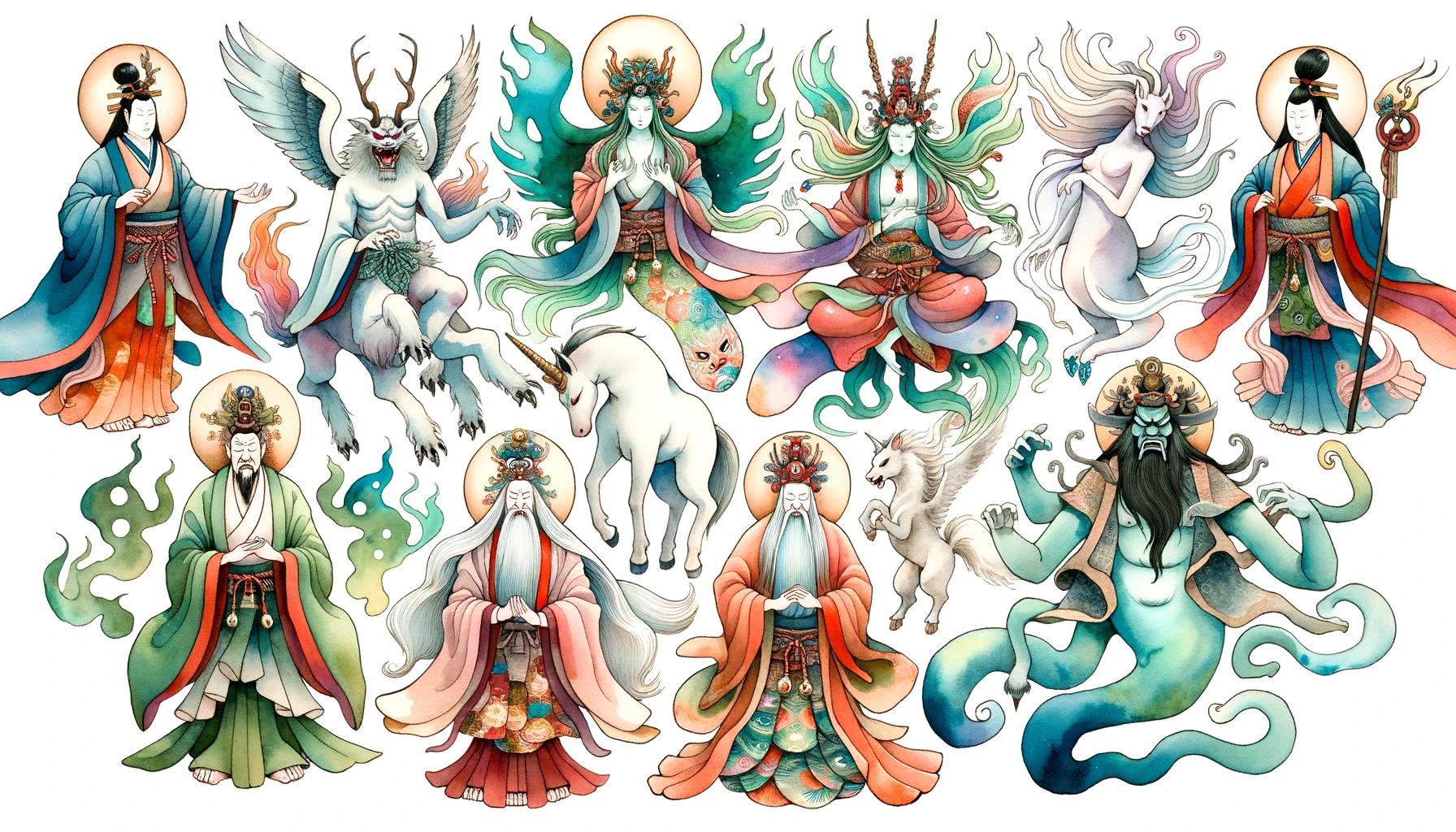
What are Kami in Japanese mythology? Kami, in Japanese mythology, are revered deities and spirits in Shintō religion. They are often translated as gods or deities, but also encompass nature forces and spirits.
Kami are interconnected with the natural world and can manifest as landscape elements, forces of nature, or even the spirits of revered ancestors. The worship and rituals associated with Kami play a significant role in Japanese culture, honoring and respecting these divine beings.
Join us as we explore the fascinating world of Kami in Japanese mythology.
The Main Japanese Kami
The world of Japanese mythology is filled with a diverse array of kami, revered deities and spirits in Shintō religion. These kami hold great significance and are worshipped for their unique qualities and domains of influence.
Let’s explore some of the main kami in Japanese mythology:
Amaterasu Ōmikami: The Sun Goddess
Amaterasu Ōmikami is considered the supreme deity and the source of all life. As the goddess of the sun, she brings warmth, light, and abundance. Amaterasu is revered in various shrines across Japan, with the Grand Shrine of Ise being the most prominent.
It is believed that the sacred mirror, one of Japan’s three imperial regalia, is housed in the inner sanctuary of the Ise Shrine, symbolizing Amaterasu’s presence and power.
Susanoo: The God of Storms
Susanoo is known as the powerful god of storms and the sea.
Often depicted as a wild and tempestuous deity, he plays a significant role in Japanese mythology. Susanoo’s tales intertwine with his sister Amaterasu, creating an intriguing dynamic between light and darkness, chaos and order.
Tsukuyomi: The God of the Moon
Tsukuyomi is the god associated with the moon and its soothing radiance. In Japanese mythology, Tsukuyomi is often depicted as a serene and gentle figure. He represents the tranquil aspects of the night and is an important deity in the Shintō pantheon.
Inari: The Deity of Rice and Agriculture
Inari is the kami associated with rice cultivation, agriculture, and prosperity. Considered a provider of abundance and good fortune, Inari is often depicted as a fox or a figure adorned with rice sheaves.
Many shrines dedicated to Inari can be found throughout Japan, where worshippers seek blessings for their harvests and livelihoods.
Other Significant Kami in Japanese Mythology
- Amidst the rich tapestry of Japanese mythology, numerous other kami hold their own significant roles and attributes.
- Kami such as Hachiman, the god of war and divine protector, and Benzaiten, the goddess of art and music, are highly revered.
- Each brings their unique influences and areas of expertise to Japanese culture and spirituality.
These are just a few examples of the main kami in Japanese mythology.
Their stories and reverence permeate through Japanese culture, shaping beliefs, traditions, and rituals that have endured for centuries.
Kami in Nature and the Elemental Forces
In Japanese mythology, Kami are not separate from nature; they are an intrinsic part of it. They manifest as various elements of the natural world and are believed to be the embodiment of landscapes, nature forces, and the spirits that dwell within them.
Kami as Manifestations of Nature
Kami can be found in mountains, rivers, forests, and other natural phenomena. They represent the inherent power and essence of these elements, giving them a divine presence. For example, mountains are seen as the dwelling places of powerful Kami, embodying both their majesty and spiritual significance.
The Kami associated with rivers are revered as guardians and protectors, ensuring the balance and flow of life-giving water.
Sacred Sites and Nature Spirits
Throughout Japan, there are numerous sacred sites that are believed to house Kami. These places, such as ancient trees, waterfalls, and rock formations, are regarded as sacred and treated with great respect.
They are considered gateways that connect the human world with the divine realm of the Kami. Many of these sites also have associated nature spirits, known as yokai, which are supernatural beings that can take on various forms and possess both positive and negative qualities.
- Yokai: Supernatural beings that inhabit sacred sites and possess unique characteristics.
- Ancient Trees: Revered as dwellings of Kami, believed to possess great wisdom and spiritual energy.
- Waterfalls: Considered places of purification and renewal, associated with powerful Kami.
- Rock Formations: Seen as embodiments of Kami, symbolizing stability, strength, and protection.
Interconnection of Kami and the Environment
The concept of interconnection is essential in understanding the role of Kami in Japanese mythology.
The natural environment is not merely a backdrop for the existence of Kami, but rather an integral part of their being. Kami are believed to influence and be influenced by their surroundings, creating a reciprocal relationship with the world around them.
This interconnectedness emphasizes the reverence for nature in Shintō. It also reflects the deep respect and harmony the Japanese people have with their environment, seeing Kami as both the guardians and manifestations of the natural order.
The belief in the interconnection of Kami and the environment reinforces the importance of maintaining balance and preserving the natural world. It highlights the responsibility and duty of humans to coexist respectfully with nature, recognizing the divine presence within it.
Ancestors and Human Spirits as Kami
The concept of kami extends beyond celestial beings and nature forces to include ancestral deities and spirits of deceased individuals. Within Japanese mythology, ancestors are revered as kami and considered guardians of their living descendants.
Kami as Ancestral Guardians
In Shintō belief, ancestors hold a significant role as protectors and guides for their living family members. Ancestral kami are believed to watch over and bless their descendants, providing support, wisdom, and assistance in times of need.
Worship of Deceased Ancestors as Kami
In Japanese culture, the veneration of deceased ancestors as kami is a deeply ingrained tradition. Ancestor worship involves rituals and ceremonies dedicated to honoring and expressing gratitude to the ancestral kami.
These rituals often include offering food, drink, and other symbolic items on ancestral altars or graves, accompanied by prayers and personal remembrances.
Kami and the Concept of Musubi
Underlying the reverence for ancestors as kami is the concept of musubi, which encompasses the interconnectivity of all things. Musubi refers to the boundless energy that flows through the universe, connecting kami, humans, and nature.
It signifies the continuation of life and the eternal cycle of existence.
By honoring ancestors as kami, individuals maintain a spiritual connection with their lineage and acknowledge the influence and importance of previous generations in shaping their lives and identities.
Worship and Rituals Associated with Kami
In Japanese mythology, worship and rituals form an integral part of the reverence and respect shown towards the kami. These practices aim to honor and appease the divine beings, seeking their blessings and protection.
The worship of kami takes place in various settings such as Shintō shrines, which serve as dedicated places of kami worship.
Shintō Shrines: Places of Kami Worship
Shintō shrines hold immense significance in the worship of kami. These sacred sites are believed to be the dwelling places of the divine beings, where they can be communed with and honored.
Shintō architecture reflects the purity and simplicity associated with kami worship, with structures made of natural materials and characterized by sacred spaces and sanctuaries.
The most prominent Shintō shrine in Japan is the Grand Shrine of Ise, which is dedicated to Amaterasu Ōmikami, the sun goddess.
This shrine, reconstructed every 20 years in a cyclical ritual, exemplifies the deep connection between kami and the tangible world.
Rituals and Offerings to Honor Kami
Rituals and offerings play a significant role in the worship of kami. These practices are guided by principles of purification and respect. Before approaching the deity, individuals partake in ritual purification, often through the act of cleansing with water or symbolic gestures.
Offerings are made to show gratitude and seek favor from the kami. These can include various items such as food, sake, flowers, or symbolic objects. The selection of offerings is influenced by the specific nature of the deity and the purpose of the worship.
The act of presenting the offerings is done with utmost reverence and care, acknowledging the kami’s divine presence.
Matsuri: Festivals Celebrating Kami
Matsuri, traditional Japanese festivals, are vibrant celebrations dedicated to the kami. These events provide an opportunity for communities to come together and express their gratitude, respect, and joy towards the divine beings.
Matsuri often involve lively processions, music, dance, and performances.
During these festivals, portable shrines or mikoshi are carried through the streets, symbolizing the presence of the kami and inviting their blessings upon the community.
Ritual performances and ceremonies are conducted, showcasing the cultural heritage and spiritual connection to the kami. Matsuri reflect the profound influence of kami worship in Japanese society and serve as a testament to the enduring tradition of reverence towards these divine beings.
Worship and rituals associated with kami form an essential part of Shintō religious practices, connecting individuals with the divine and fostering a sense of harmony and gratitude within the natural and spiritual realms.
Historical Texts and Depictions of Kami
Historical texts and artistic representations play a significant role in understanding the world of kami in Japanese mythology. These ancient records and depictions provide invaluable insights into the beliefs and cultural significance of kami throughout history.
Kojiki and Nihon Shoki: Ancient Records of Kami
The Kojiki and Nihon Shoki are fundamental historical texts that detail the creation myths and the pantheon of kami in Japanese mythology. Written in the 8th century, the Kojiki, also known as “Records of Ancient Matters,” is considered the oldest surviving Japanese book.
It presents narratives and genealogies of various kami, including the powerful sun goddess, Amaterasu Ōmikami.
The Nihon Shoki, or “Chronicles of Japan,” compiled in the 8th century as well, further expands on the myths and kami worship, documenting the reigns of various emperors and their interactions with the divine beings.
Kami in Japanese Art and Literature
Japanese art and literature have long depicted kami, capturing their essence and importance in different mediums. Paintings, sculptures, and literary works convey the awe-inspiring nature of kami, their interactions with humans, and their roles in shaping the destiny of the land.
Notably, the art of the Edo period (1603-1868) saw the rise of ukiyo-e woodblock prints that often depicted kami from myths and religious stories, allowing people to connect with the divine on a visual level.
Evolution of Kami Depictions over Time
The representations of kami have evolved over centuries, reflecting changing beliefs and artistic styles. From the initial simple iconography to more elaborate and detailed portrayals, kami depictions have adapted to the cultural shifts.
These changing representations offer a glimpse into the evolving spiritual and cultural landscape of Japan and its deep connection to the divine.
Modern Interpretations and Understanding of Kami
Modern society in Japan continues to embrace and interpret the concept of Kami in various ways. The influence of Shintō, the religion in which Kami are deeply rooted, can be observed in different aspects of contemporary Japanese culture.
Shintō in Contemporary Japanese Society
Shintō remains a significant part of Japanese society, as it continues to shape people’s beliefs, customs, and rituals. Many Japanese individuals still visit Shintō shrines to pay respects to Kami and seek their guidance and blessings.
Shintō ceremonies, such as weddings and coming-of-age celebrations, often incorporate traditional rituals and prayers to honor the Kami.
Kami in Popular Culture and Media
Kami have also found their way into popular culture and modern media, reflecting their enduring presence and influence. Manga, anime, and video games frequently feature characters inspired by Kami or incorporate elements of Japanese mythology.
These portrayals not only entertain but also serve as a medium for preserving and disseminating traditional beliefs and stories to a wider audience.
Kami-themed festivals and events attract both locals and tourists, providing an opportunity to experience the vibrant fusion of ancient traditions and modern entertainment.
The participation in such cultural celebrations not only showcases the importance of Kami in Japanese society but also enriches the understanding and appreciation of their significance among global audiences.
Western Perceptions and Study of Kami
Outside of Japan, there has been growing interest in studying and understanding Kami from a Western perspective.
Scholars and researchers delve into Japanese mythology and religion to uncover the intricacies and symbolism associated with Kami. This exploration seeks to bridge the cultural divide and foster cross-cultural dialogue while expanding the knowledge and awareness of Kami’s role in Japanese society.
Academic institutions and organizations promote the study of Kami, providing platforms for researchers to examine their historical, cultural, and religious aspects. This cross-disciplinary approach aids in fostering a deeper understanding of Kami and their significance within the intricate tapestry of Japanese mythology.
- Enhanced understanding of Kami promotes cultural exchange and appreciation
- Western scholars contribute to the global knowledge of Kami
- Comparative studies shed light on similarities and differences between Western and Japanese belief systems
- Exploration of Kami deepens understanding of the rich spiritual and cultural heritage of Japan
Through ongoing exploration, both within Japan and beyond its borders, the understanding and interpretations of Kami in modern times continue to evolve, shaping their place in contemporary Japanese society and the broader world.
.

